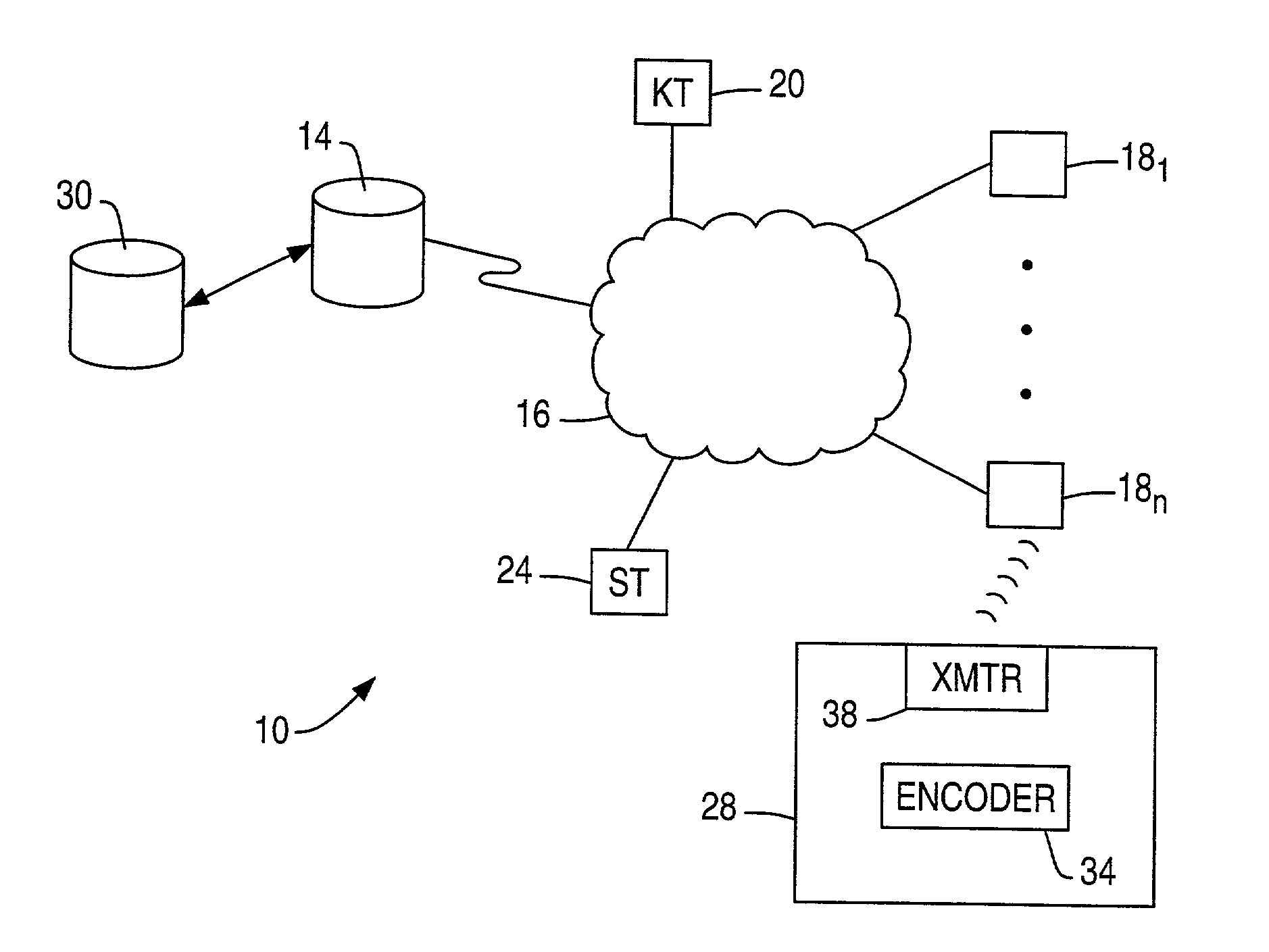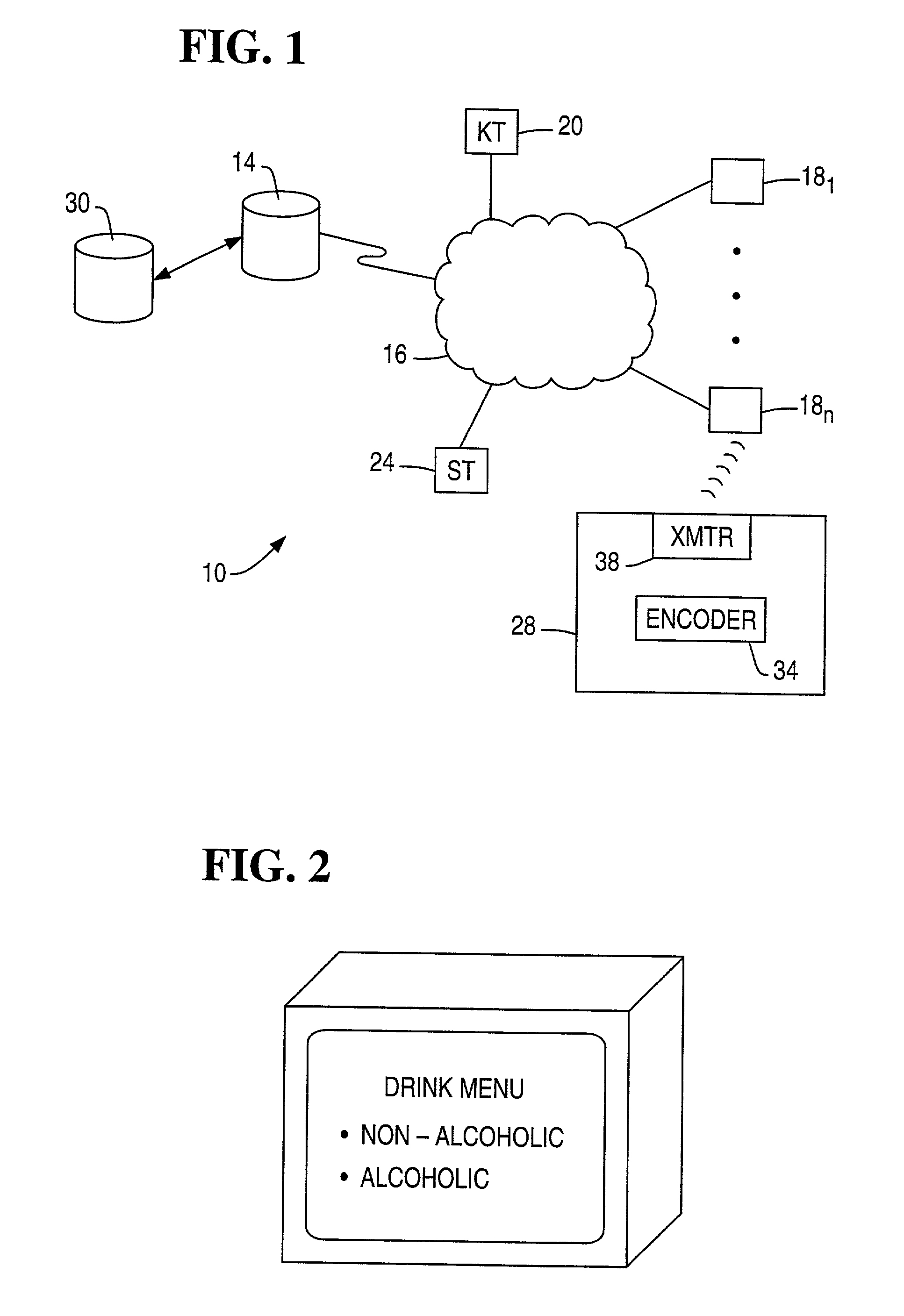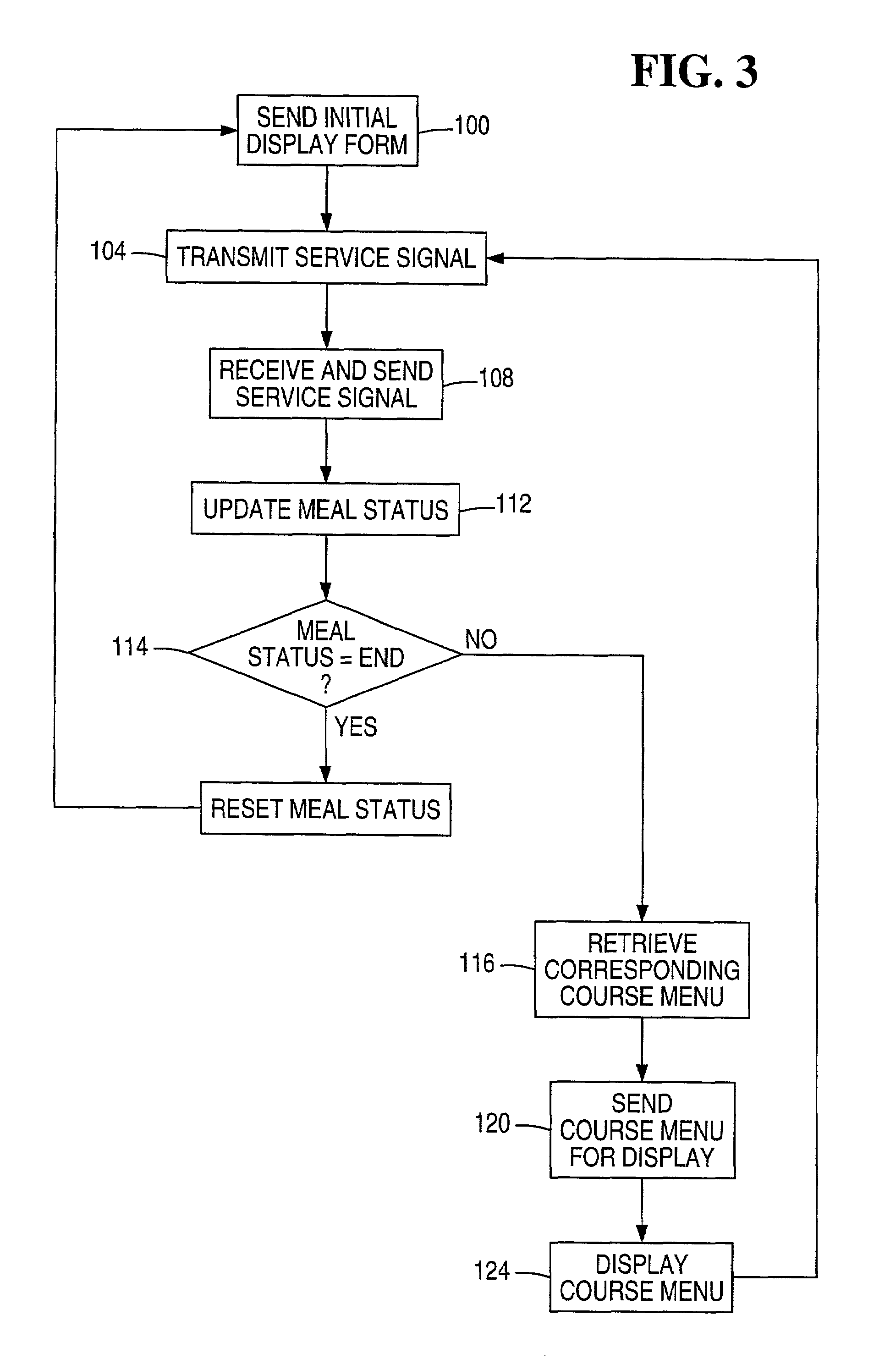System and method for synchronizing restaurant menu display with progress through a meal
a restaurant and menu technology, applied in the field of restaurant dining service management, can solve the problems of server's appearance during these periods of intense conversation or deliberation, not being well received by patrons, and not being able to accommodate the dining party, so as to facilitate the insertion of specials
- Summary
- Abstract
- Description
- Claims
- Application Information
AI Technical Summary
Benefits of technology
Problems solved by technology
Method used
Image
Examples
Embodiment Construction
[0031]A system embodying the present invention is shown in FIG. 1. System 10 may include a plurality of patron communicators 18a-18n that may be located at the various places where patrons consume meals, such as tables or booths. From server 14, the communicators receive data objects or forms containing meal course menus that may be displayed by the patron communicators for viewing by the patrons. An attendant service indicator 28 provides a service signal that may be received by a patron communicator or that may be entered in a service terminal 24. The service signal is communicated to server 14 to enable the synchronization between the display of course menus and the progress of a meal ongoing a location proximate one of the communicators. Data that may be used by server 14 for generating special offers to be inserted in the course menus or deleting items from a menu may be entered through kitchen terminal 20.
[0032]The communication may occur through a computer communication netwo...
PUM
 Login to View More
Login to View More Abstract
Description
Claims
Application Information
 Login to View More
Login to View More - R&D
- Intellectual Property
- Life Sciences
- Materials
- Tech Scout
- Unparalleled Data Quality
- Higher Quality Content
- 60% Fewer Hallucinations
Browse by: Latest US Patents, China's latest patents, Technical Efficacy Thesaurus, Application Domain, Technology Topic, Popular Technical Reports.
© 2025 PatSnap. All rights reserved.Legal|Privacy policy|Modern Slavery Act Transparency Statement|Sitemap|About US| Contact US: help@patsnap.com



